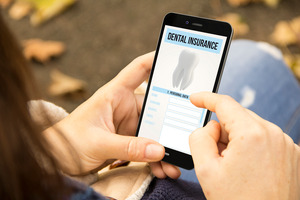
Regular dental care is essential for maintaining a healthy smile, but some people might have trouble finding room in their budgets for visits to the dentist. Luckily, dental insurance can be an invaluable tool for making a wide array of dental services more affordable. But do you know exactly what sort of treatments are covered by your plan? Here’s what you need to know about your dental insurance benefits.
What is the Purpose of Dental Insurance?
First of all, it’s important to understand that the purpose of dental insurance is a little different than that of medical insurance. While medical insurance is largely meant to help pay for treatment after a problem occurs, dental insurance is more focused on stopping issues from happening in the first place. As such, you can generally expect your dental insurance plan to offer the highest level of coverage for preventive services.
What Does Dental Insurance Coverage Typically Look Like?
Many dental insurance plans offer 100-80-50 coverage, which is often structured as follows:
- 100% coverage for preventive and diagnostic services such as your biannual dental checkups and cleanings.
- 80% coverage for basic restorative procedures, with fillings being a common example.
- 50% coverage for major restorative procedures such as dental crowns or dental bridges.
This is just a general outline. The exact services covered and the amount that the insurance company is willing to pay ultimately depends on which plan you have. Before you visit your dentist, it is worth taking your time to review your dental insurance benefits in order to confirm what coverage is available.
What Else Do You Need to Know About Dental Insurance?
It should be noted that many dental insurance plans come with a deductible. This is simply the amount that you’ll need to pay out of your own pocket before your insurance company will start covering your care. Once you meet your deductible, you won’t have to worry about paying it again until your benefits reset. Keep in mind that some plans will still offer full coverage for preventive care even if you haven’t fully paid your deductible.
Additionally, you should make sure you’re aware of your dental insurance plan’s annual maximum. This is the total amount that your plan will pay for dental care during the benefit period. It’s generally recommended that you use as much of your annual maximum as possible; once it resets at the end of the benefit period, any leftover money will essentially be lost.
Understanding your dental insurance coverage and other aspects of your plan is important if you want to minimize your out-of-pocket dental costs. Remember that if you have any questions about your dental insurance plan, you can always ask the helpful team members at your dentist’s office.
About the Author
Dr. Austin Amos studied at the University of Texas School of Dentistry in Houston, and he takes continuing education classes to keep up with the latest dental techniques and technologies. His practice in The Colony, Ridgepointe Dental, accepts a wide variety of dental insurance plans in order to help as many patients as possible enjoy quality dental care at an affordable rate. To schedule a consultation with Dr. Amos, visit his website or call (972) 625-4746.
